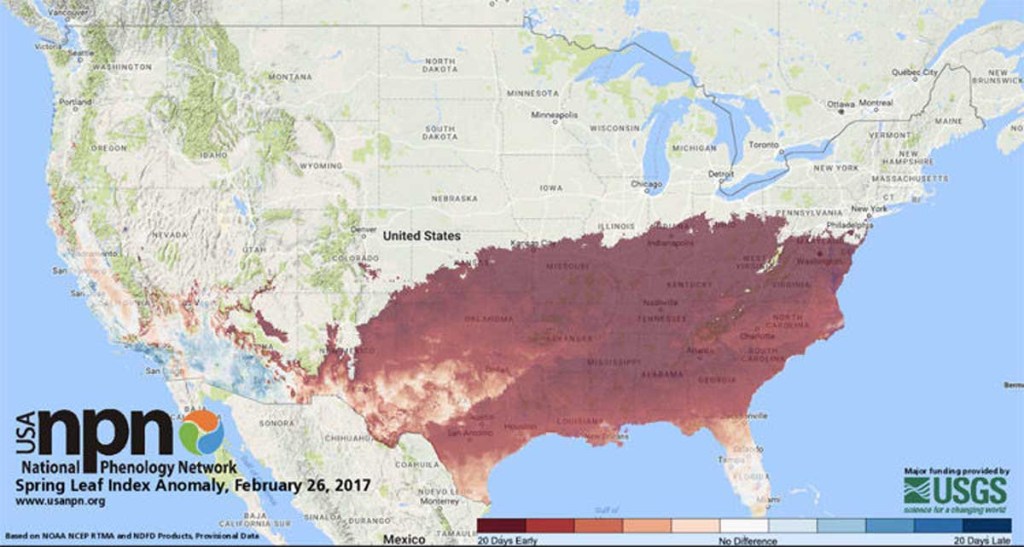Has spring sprung in your neck of the woods?
Published 3:29 pm Tuesday, February 28, 2017

- A new set of scientifically backed maps shows the early rollout of spring 2017 across the U.S.
Shed your coat, mop your brow and break out the flip-flops: spring-like temperatures got the jump on the season this year, arriving as much as three weeks early in some parts of the country.
The official first day of spring arrives March 20, marking the “Vernal Equinox” in the northern hemisphere, or the day when the sun crosses the equator.
But Mother Nature had different travel plans.
Using a variety of indicators of spring, including nationwide heat and temperature data and field observations of the leafing and blooming of common plants, researchers found that spring is rolling out at an unusually rapid pace across the U.S. compared to the long-term average (1981 to 2010).
A set of maps produced by U.S. Geological Survey and the USA National Phenology Network shows the galloping onset of the season.
Has spring arrived in your area? Watch the startling animated action. View this map showing how many days early the season arrived across a wide swath of the U.S., and this one showing the 2017 dates when spring sprung, according to the Leaf and Bloom Indices model.
Super early spring is not all good news, though. “It poses significant challenges for planning and managing important issues that affect our economy and our society,” Jake Weltzin, USGS ecologist and the executive director of the USA-NPN, said in a release.
The downsides: earlier arrival of disease-bearing ticks and mosquitos and an earlier, sneezier allergy season. Early spring bloom can have a domino effect, disrupting the patterns of bees, butterflies and birds and impacting local agriculture and outdoor recreation, including fishing and hunting.
A recent study based on the same leaf-and-bloom index found that half of all U.S. National Parks are experiencing extreme early onset of spring compared to data from the last 112 years. Spring is arriving earlier than ever for three out of four National Parks, researchers found.
Volunteers helped gather the spring index data on which the National Parks study and the UGS-NPN maps are based. Amateur and professional field observers collected information including dates when sufficient heat arrives to initiate leafing and blooming of common plants, including lilacs and honeysuckle.





